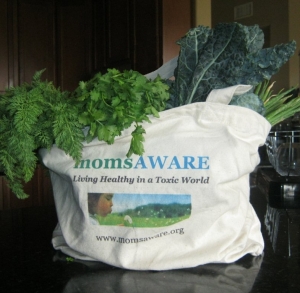Natural Year Challenge: Food - Month Four
Learn Your Greens
Dark leafy greens are among the most nutrient-dense of all plant foods. They offer a natural form of folate (as opposed to folic acid, which is a synthetic version often found in vitamins and fortified foods).
Greens can be intimidating, however. What can we do with leafy greens besides throw them in a salad? What if I don't have a juicer? Which greens are the most nutritious?
When it comes to lettuce, the greener the leaf, the greater the nutrition. Greens such as Swiss chard, collards, dandelion, and beet greens provide beta carotene, vitamins A and C, chlorophyll, and calcium. Other nutritious greens include turnip and mustard greens, lamb’s quarters, spinach, and arugula.
Your yard may offer healthy greens! See the Eat the Weeds website to find out more.
All plants contain certain antinutrients which are advantageous to the plant, but can be problematic for those who eat them. Oxalates, present in many leafy greens, are naturally occurring substances which link with calcium to form crystals. For the plant, oxalate crystals tear up the "teeth" of the insects that might eat them, sending the bugs elsewhere. For humans, these crystals are normally handled quite well, but when health is compromised, these oxalates may be absorbed and cause kidney stones and other problems. For more information on oxalates, see this website.
To store greens, wrap them in a damp towel and place in an open plastic bag in the crisper section of your refrigerator. Some greens may do better in perforated plastic bags. Greens can store nicely for up to a week. It's best to wash your greens before using rather than before storing.
The options are endless for utilizing these powerhouses of nutrition! Here are five fun ways to integrate dark leafy greens into your diet.
- Light cooking. The amount of cooking time will depend on the thickness of the leaf. Some greens may be cooked in butter or another stable oil for less than a minute. Others will be better with 1/2 c. broth or other liquid and left to simmer for 20 minutes. Here is one suggested recipe:
- 2 tbsp. red palm oil, butter, ghee, or cooking oil of choice
- 2 bunches fresh kale (can substitute Swiss chard)
- 1 small onion, chopped
- 1-2 cloves garlic, chopped
- Salt and pepper to taste
- Salads. The key to experimenting with greens in this manner is the salad dressing. Here is a simple, nutritious recipe:
- 1 tsp. Dijon-style mustard (Annie's Naturals offers one with no preservatives or additives. We'll be making lacto-fermented mustard in our Month Ten Challenge.)
- 2 tbsp. raw apple cider vinegar
- 1/2 c. extra virgin olive oil
- 2 tsp. expeller-pressed flax oil
- Green juice. A juicer such as the Vitamix, Omega, or Green Star is optimal. However, any high-powered blender can make delicious green juice. Simply throw in any desired greens, an apple and/or lemon for flavor, a small slice of raw ginger, and blend. Strain through a nut milk bag or cheesecloth. Enjoy!
- Green pulp. Because most juicers/blenders don't extract all of the nutrients, the remaining pulp contains fiber and nutrition. This pulp can be used in a variety of ways:
- Add to meatloaf or sausage. Include pulp when mixing in any spices, onions, etc.
- Stir-fry the pulp with desired seasonings.
- Add to fresh homemade guacamole.
- Add salad dressing (recipe above) and eat raw.
- Add to your dog's food bowl!
- Dehydrated greens. The possibilities are endless, but here are two suggestions:
- Pulp crackers. Juice pulp can be blended with favorite spices, flax seeds, and water and dehydrated for a crisp, healthy snack. Try this recipe!
- Kale chips. Remove kale from stems. Tear into pieces and toss with olive oil and salt. Dehydrate for 3-6 hours. (Spinach makes a wonderful substitute.)
In the following video, Andrea demonstrates green juicing, cooking with kale,
and incorporating green pulp into a meat dish.

